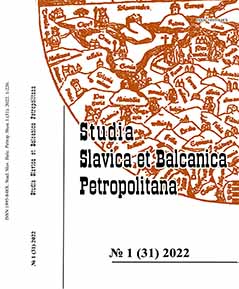Irene Doukaina and the double monastery of the Theotokos Kecharitomene and Christ Philanthropos: Relation between private piety and ktetorship
Irene Doukaina and the double monastery of the Theotokos Kecharitomene and Christ Philanthropos: Relation between private piety and ktetorship
Author(s): Ljubica VinulovićSubject(s): History, Cultural history, Ethnohistory, History of ideas, Local History / Microhistory, Middle Ages
Published by: Издательство Исторического факультета СПбГУ
Keywords: Irene Doukaina; Alexios I Komnenos; Komnenian genos; Theotokos Kecharitomene; Christ Philanthropos; the typikon of the monastery Theotokos Kecharitomene; private piety; ktetor; ktetorship;
Summary/Abstract: The main preoccupation of this paper is a life, private piety and ktetorship of roman empress Irene Doukaina, as well as the political aspect of her ktetorship. She was the wife of a roman emperor Alexios I Komnenos. At the beginning of the 12th century Irene together with her husband founded a double monastery dedicated to the Theotokos Kecharitomene (Full of Grace) and to the Christ Philanthropos (Man-Loving). It was located in the 10th district of Constantinople where all Komnenian monasteries were grouped, between the aqueduct of Valence in the south and the Blachernae palace in the north. Today, this complex no longer exists, we know about it based on the preserved typikon of the Theotokos Kecharitomene. This monastery complex was the first real common endowments of the Komnenian ruling couple. It was founded as the final resting place of ktetors. In early 12th century in Constantinople some changes happened when it comes to devotion to the saints. Members of the royal family had a special personal relationship with the saints through which the emperor and empress see themselves as a parallel earthly reflection of Christ and the Mother of God. The first ruling couple who saw themselves as the counterpart of Christ and the Mother of God, were Alexios I and Irene Doukaina. This new, more personal relationship with Christ and the Mother of God is reflected in the visual culture through the model of double endowment and the consecration of the churches. Alexios’ monastery dedicated to the Christ Philanthropos was male monastery and Irene’s monastery dedicated to the Theotokos Kecharitomene was female monastery. During the reign of Alexios and Irene for the first time in the Roman empire the protective role of the Mother of God was so obviously bound exclusively to the female members of the imperial family. The monastery of the Theotokos Kecharitomene, was not only expression of Irina’s personal piety and a votive gift for Theotokos who her personal protector and an intercessor at the Last Judgement was but also was an expression of the power of the empress Irene Doukaina.
Journal: Петербургские славянские и балканские исследования
- Issue Year: 2022
- Issue No: 1(31)
- Page Range: 71-82
- Page Count: 12
- Language: English

